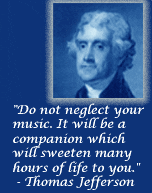
The Naming Game, Part 2 – Cataloging Chaos
By Ralph Graves
Classical music nomenclature can be a major obstacle for newcomers to the genre. In Part 1 of this series, I tried to demystify things a little by explaining why and how numbers were used. But what about all those letters? In some cases, they’re referring to some type of catalog system, which is what this post is about.

A little disorder around the edges
Beginning around the start of the 19th Century, music publishing became a mature and organized industry. If you look at a list of published works by Beethoven, the opus numbers represent all of his approved compositions. The same is true for Mendelssohn, Schumann, and certainly Brahms.
All of these composers have works that were never published, though — or were never assigned opus numbers. You might see something like WoO 3, which means “Without Opus, Number 3.” So if a composer has, say, twelve unpublished compositions, they may be labeled WoO 1, 2, 3, and so on through 12.
So where do these numbers come from?
Usually, there’s a biographer (sometimes a team of scholars) who pours through a composer’s papers and creates the initial catalog of unpublished works. They’re the ones who establish which piece will be designated WoO 3 rather than WoO 4.
So where do those extra letters come from?
For the composers who published almost everything, cleaning up the leftovers with WoO is usually sufficient. But there are some composers — like Schubert — who wrote far more than they ever published. And when you go back to the Baroque period (and earlier), composers wrote prolifically but published very rarely.
These are the bodies of work that need serious organization — and this is where all of those extra letters come from. Several methods have been used to catalog works. Chronological is the most intuitive. This is how Ludwig von Köchel cataloged Mozart’s works in the 1860’s. These numbers usually have a K (Köchel) or KV (Kochel Verzeichnis) in front of them.
Modern scholarship and the discovery of lost manuscripts have made some revisions to the list, which is why you’ll see things like:
Mozart: Symphony in G, “Alte Lambach”, K.45a (the “a” denotes an insertion between K. 45 and K. 46 of the original list)
Otto Erich Deutsch did the same thing with Schubert’s music in the 1950’s. Although Schubert has over 100 published compositions, he wrote almost 1,000, Most people just refer to his music using the Deutsch numbers.
Schubert: String Quartet, No. 2 in C major, D. 32
OK, Köchel and Deutsch make sense, but what’s up with Haydn’s numbers?
Anthony van Hoboken used a different type of organization for Haydn’s music in the late 1800s. He first arranged everything by type of composition, Type I: symphonies, Type II: divertimenti, Type III, string quartets, and so on.
Within each type, the works are arranged in chronological order. So Haydn’s first symphony is Hob:I:1. While the symphonies work pretty well, it can get a bit messy for other works. His piano sonatas, for example, have a number system assigned to them by Haydn scholar Howard Chandler Robbins Landon that is at odds with the Hoboken numbers.
So Haydn’s Piano Sonata in G, written in 1766, is L.13, Hob:XVI:6
Social numbering
Sometimes it’s not a person but an organization — or society — that does the numbers. Johann Sebastian Bach only had a few works published during his lifetime. When the Bach-Werke-Verzeichnis (Bach Works Catalogue) undertook the task of publishing his complete works, they also assigned catalog numbers to them. Like Hoboken, they sort of organized the music along the lines of type.
So the first group of BWV numbers is all cantatas. Bach’s Cantata No. 140 “Wachet auf, ruft uns die Stimme” is indeed BWV 140. As with other catalogs, the listing has been updated over time, so you’ll sometimes see things like BWV 1006a and 1006b.
There also was a Händel-Werke-Verzeichnis, with a purpose similar to the Bach society. They assigned HWV numbers to Handel’s works, although their usage isn’t yet as widespread as the BWV numbers.
When catalogs collide
Sometimes not even the scholars agree — which can make things ugly. The first person to catalog the 555 keyboard sonatas of Dominico Scarlatti was Alessandro Longo in the early Twentieth Century. He grouped them together in suites according to keys and assigned them L. numbers (for Longo — not to be confused with the L. of Landon-Robbins for Haydn’s music).
Ralph Kirkpatrick, scholar, and harpsichordist, did extensive research on these works in the 1940s. He came up with a revised chronological listing and gave each sonata a K. number (for Kirkpatrick, not Köchel — you can see things are already going south).
In the 1960s, Giorgio Pestelli offered up yet another revised listing, different from both Longo’s and Kirkpatrick’s catalogs. And yes, he assigned each work a new number with P. for Pestelli.
So Dominico Scarlatti’s (and you have to specify Dominico — his father Alessandro Scarlatti was also a famous composer) keyboard sonata in D minor, Andante moderato is simultaneously known as:
D. Scarlatti: Sonata in D minor, K. 52, L. 267, P. 41
So what’s it all mean?
Catalog numbers are usually a good way to uniquely identify a work. Don’t be intimidated by them, or particularly impressed by people who use them extensively, though. If you refer to Haydn’s Symphony No. 45 as the “Farewell” symphony, most classical music lovers will know exactly which work you’re referring to. Calling it Hob.I:45, not so much.
When catalog numbers clarify, use them. When they don’t, don’t. That’s what I do, anyway.
Just be careful with Scarlatti (Dominico, that is).

